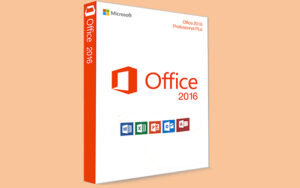©2023 Cursa Online
Curso online Redacción de Escritos y Emails en Inglés

Descripción
El objetivo de este Curso online Redacción de Escritos y Emails en Inglés es aportar las herramientas y recursos necesarios para lograr una comunicación escrita en inglés eficaz y correcta, a través de la redacción, tanto de correos electrónicos, como de diferentes escritos empresariales y administrativos.
Centrándose en un enfoque comunicativo, este Curso online Redacción de Escritos y Emails en Inglés, de 30 horas de duración, muestra, de una manera didáctica y basada en ejemplos prácticos, cómo elaborar los diferentes escritos y correos electrónicos en inglés en una empresa.
En el ámbito laboral, nos enfrentamos constantemente a la redacción de e-mails, cartas formales, informes y escritos relacionados con la actividad empresarial. Estos escritos tienen gran importancia en las organizaciones, ya que son el primer acercamiento con un cliente potencial o con otros contactos empresariales. Por tanto, es fundamental saber cómo redactarlos de forma correcta.
Ejemplos de email formal en inglés
A partir de supuestos de redacción de correspondencia en distintos formatos y en distintas situaciones de demanda de información (ofertas de productos y servicios, solicitud de información, convocatorias de reuniones, etc.), aprenderás a identificar las estructuras y fórmulas apropiadas y el estilo de redacción correcto según las circunstancias y el destinatario de la correspondencia.
Igualmente, serás capaz de utilizar un amplio repertorio de vocabulario y de introducir expresiones idiomáticas, todo ello apropiado y preciso al ámbito técnico relacionado.
Cómo escribir un email en inglés
De este modo, gracias a este Curso online Redacción de Escritos y Emails en Inglés podrás escribir cartas o correos electrónicos de estilo formal expresando la solicitud o la información de forma clara y precisa, y adaptando el estilo a las condiciones del destinatario propuesto.
Sabrás redactar adecuadamente en inglés e-mails dirigidos a realizar reservas, compartir información, actualizar información previamente compartida, pedir a alguien que nos ponga al día sobre algún asunto, solicitar facturas, responder a invitaciones, organizar reuniones, etc., comprendiendo las respuestas a todos estos correos.
Asimismo, adquirirás conocimientos para redactar actas, informes o notas internas en inglés, así como de elaborar memorandos y reconocer en qué situaciones es necesario redactar un memorándum en inglés.
¿A quién se dirige este curso?
Este Curso online Redacción de Escritos y Emails en Inglés, con Certificado Acreditativo, va dirigido a profesionales del sector de la administración, secretariado, gestión empresarial, comunicación… o personal que utilice habitualmente los emails para comunicarse en el ámbito laboral que estén interesados en profundizar en la elaboración de escritos y correos electrónicos en idioma inglés de manera correcta y precisa.
Para la realización de este curso es necesario tener un conocimiento de la lengua inglesa equivalente a un nivel B1, B2 o superior del Marco Común Europeo de Referencia para las Lenguas.
≡ Temario del Curso online Redacción de Escritos y Emails en Inglés
TEMA 1. Reservations
- Header, opening salutation and closing salutation
- What Is an Email Header?
- The opening salutation
- The closing salutation
- Body of a reservation email/letter
- Phraseology and Model of a reservation email/letter asking for information
- Phraseology and Model of a reservation email/letter making a reservation.
- Phraseology and Model of a reservation email/letter canceling a reservation
- Phraseology and Model of a reservation email/letter confirming a reservation
TEMA 2. Sharing news through emails or letters
- Parts of an informative email/letter
- Opening and closing salutation
- The opening salutation. Greetings
- The closing salutation. Finish the email
- The subject
- The body of informational letters/emails
- General tips for writing better informational emails
- Useful phrases
- Opening and closing salutation
- Different types of informative emails/letters:
- Company announcement letter/email
- Model of company letter/email – Promo Announcement
- Model of company announcement email – internal recruiting
- Model of company announcement email – new employee introduction
- Digest emails/letters
- Model of digest email – business performance
- Survey email/letter
- Model of survey email
- Acquisition email/letter
- Model of Acquisition email/letter
- Customer recovery email/letter
- Model of customer recovery email/letter
- Letter/email introducing a company
- Model of email introducing a company
- Product launching letter/email
- Model of product launching email
- Company announcement letter/email
TEMA 3. Updating information
- Writing emails intended to update previously shared information
- Structure
- Opening and Closing Salutations
- The Subject Line
- Mail body: phraseology information update
- Introduction:
- Summary of Previous Information:
- Details of the Update:
- Explanation or Rationale:
- Impact or Benefits:
- Next Steps or Actions Required:
- Questions or Feedback:
- Closing Remarks:
- Phraseology
- Vocabulary
- General Model of Update Email
- Types of update emails/letters
- Giving an update in case of crisis
- Model of update email – giving an update in case of crisis
- Update email/letter – brief company statement
- Model of update email/letter – brief company statement
- Legal agreement change email/letter
- Model of legal agreement change email/letter
- Project Update email/letter
- Key points of current project update email
- Model of project status email to manager or supervisor
- Giving an update in case of crisis
- Writing emails/letters asking for an update
- The Fundamentals of Update Emails
- Structure
- Phraseology
TEMA 4. Invoice Request emails/letters
- Structure and vocabulary of invoices
- Structure of invoices
- Vocabulary of Invoices
- Structure of Invoice Request emails/letters
- Subject Lines
- Opening and Closing Salutations
- Opening salutations
- Closing salutations
- Body and phraseology
- Types of Invoice Request emails/letters
- Letter/email requesting an invoice from the supplier/vendor
- Request letter for the original invoice
- Request for Duplicate Invoice
- Invoice letter for payment
- Request an invoice via email
- Request letter for a tax invoice
- Follow-Up Invoice Request Email
- Missing Invoice Request Email
- Invoice Update Request Email
- Request for Proforma Invoice
TEMA 5. Invitations
- Structure and vocabulary of invitations
- Structure of invitations
- 1. Subject line (for emails)
- 2. Letterhead
- 3. Greeting
- 4. Body of the letter
- 5. Other details
- 6. Closing and signing
- Vocabulary of invitations
- Invitation emails/letters
- Model of invitation email
- Structure of invitations
- Structure of emails/letters answering invitations
- Opening and Closing salutations
- Body, phraseology of emails/letters answering invitations
- Phraseology
- Model of email answering an invitation
TEMA 6. Organization of meetings
- Structure of meetings
- Agenda
- Participation expectations
- Main presentation
- Feedback
- Collect data
- Summary
- Parts of the emails aimed at organizing meetings
- Tips on how to request a meeting by email
- Subject Line
- Heading and Closing salutation
- Body of emails aimed at organizing meetings: vocabulary and expressions, structure and verbal tenses used
- Structure
- Introduction with meeting purpose
- Link to the meeting agenda
- The required resources to read or view before the meeting
- Closing sentence or reminder
- Vocabulary
- Verbal tenses used
- Model of meeting invitation email/letter
TEMA 7. Minutes
- Objective of Minutes
- Who and When
- Elements to be included in minutes and structure
- Main Elements
- Structure
- How to draw up minutes
- Different types of minutes in English
- Model of minute of Board Meeting
TEMA 8. Reports
- Structure of Reports
- Useful expressions and terms for writing reports
- Vocabulary -Describing facts and figures in business reports
- Tips on How to Organize a Business Report
TEMA 9. Internal Notes
- Types and uses of Internal Notes
- Structure of Internal Notes
- Heading
- Body
- Closing
- Vocabulary and Phraseology for Internal Notes
- Phraseology to start an internal note
- Expressions to make requests
- Common terms in internal notes
TEMA 10. Memos
- When to write a memo
- Policy Changes
- Project Updates
- Meeting Summaries
- Operational Instructions
- Announcements
- Parts of a memo
- 1. Header
- 2. Introduction
- 3. Body
- 4. Conclusion or Call To Action
- 5. Closing Salutation and Signature
- Summary
59€
Características
- Curso de 30 horas de duración.
- Tienes 3 meses para realizarlo.
- Acceso a la plataforma las 24 horas, los 7 días de la semana.
- Tutoría online disponible.
- El curso incluye pdf, ejemplos, vídeos, ejercicios prácticos y evaluaciones.
- Compatible con cualquier sistema operativo y dispositivo móvil.
- Ponte tu propio horario ya que el curso es online.
- Al finalizar, recibirás vía email tu Certificado Acreditativo emitido por Cursa Online.
Requisitos
- Tener un conocimiento de la lengua inglesa equivalente a un nivel B1, B2 o superior del Marco Común Europeo de Referencia para las Lenguas.
Condiciones
- Tras la compra, en un plazo de 72 horas laborables recibirás en tu e-mail las instrucciones y las claves para acceder al curso.
- Si no recibes las claves en 72 horas laborables, revisa tu carpeta de Spam. Si tampoco están allí, contacta con nosotros y te las reenviaremos.
- No se admiten devoluciones una vez se haya hecho uso de las claves para acceder al curso.













